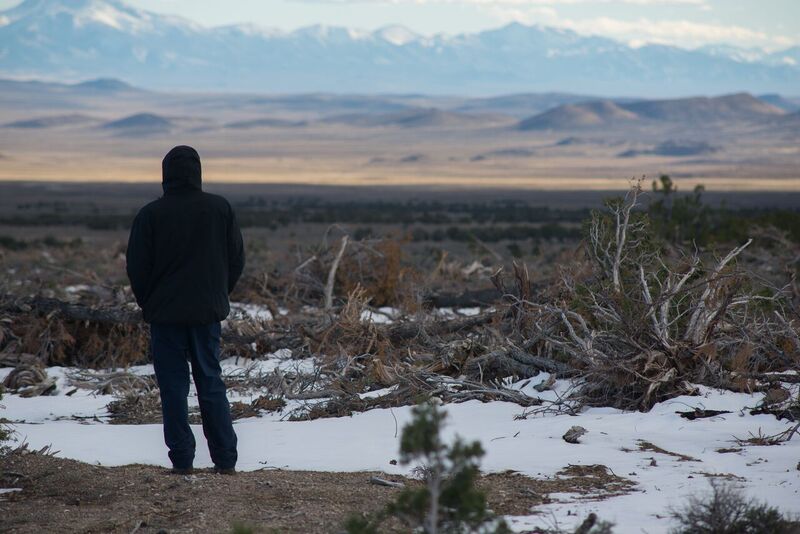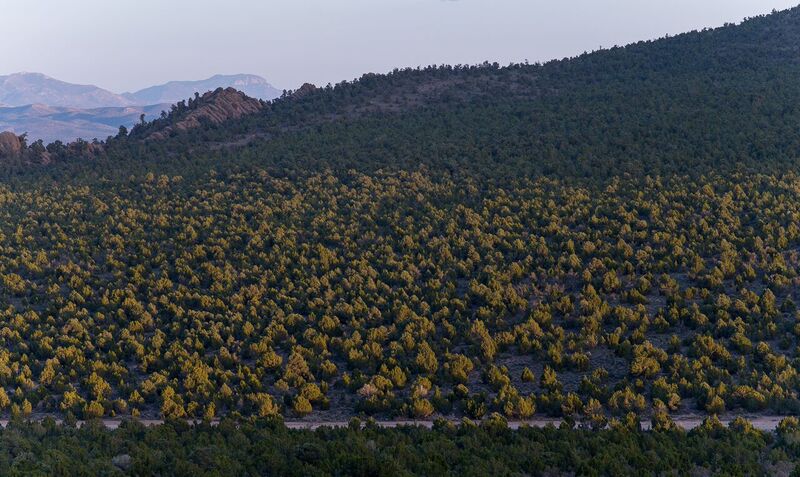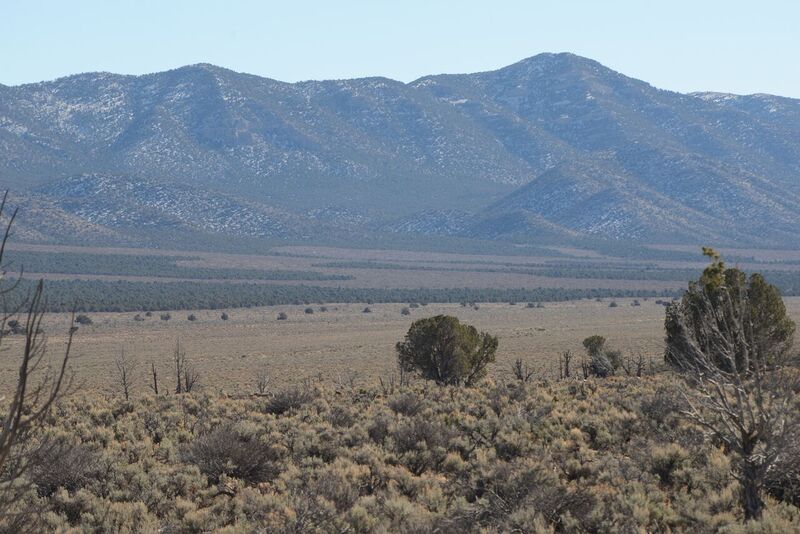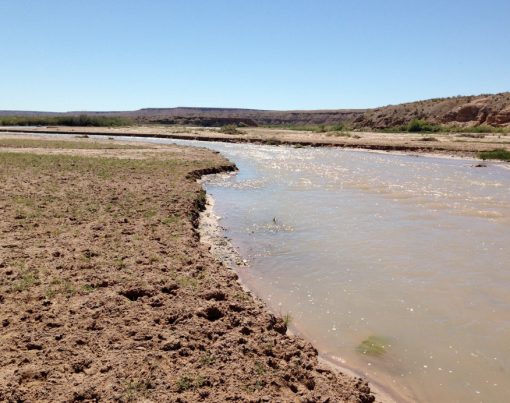
by Deep Green Resistance News Service | Jan 11, 2016 | Biodiversity & Habitat Destruction
By Katie Fite / WildLands Defense
This article first appeared on Counterpunch
Featured Image: Virgin River with banks trampled like a feedlot by Cliven Bundy cattle. May 2015.
In Oregon, an armed occupation of Malheur Wildlife Refuge headquarters is being led by self-proclaimed “patriots” from Nevada. They are defending a public lands ranching family’s “right” to set fires and break the law.
In Nevada, Cliven Bundy owes more than a million dollars in grazing fees. An armed confrontation broke out when BLM began to impound his trespass livestock. The government backed down. For almost two years, no action has been taken while the Bundy camp becomes ever more brazen. This past summer, when Cliven Bundy went to the Nevada legislature to support a bill to turn over federal authority of public land to the state, he was treated to a barbecue by Nevada Congressman Mark Amodei.
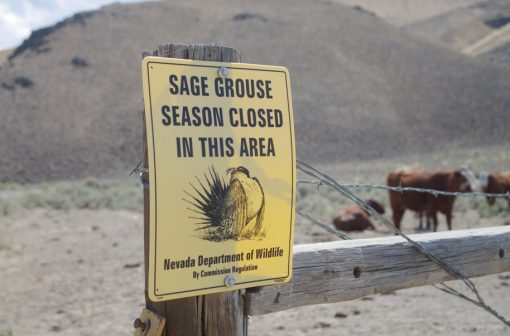
Cliven Bundy is not the only Nevada Rancher being given proprietary treatment by Nevada federal land managers. Settlement deals and BLM coddling reward hostile ranchers at the expense of the public’s land.
Argenta Allotment Settlement
There has been prolonged, severe drought in Nevada. In 2014, defiant public lands ranchers resisted Battle Mountain BLM drought closures and cattle cuts in the Argenta allotment. They were emboldened by the Bundy incident. The ranchers set up a “Grass Camp,” aided by instigator Grant Gerber, across from the BLM office. They have waged an intimidation campaign against agency staff. They whined incessantly to cattle friendly Nevada politicians Amodei and Senator Heller. The Elko paper did not really report, but instead was a worshipful cheerleader against the BLM. The ranchers denied there even was a drought. At the very same time, they received lavish federal drought disaster relief payments.
The cattle damage became so severe that by late summer the local BLM finally closed the sensitive sage-grouse habitats in mountain pastures of the Shoshone Range to grazing. The ranchers and states rights politician John Carpenter appealed the protective closure. In spring 2015, an Interior Department Office of Hearings and Appeals administrative law judge finished review of a mountain of documents, and ruled in favor of the closure.
But within weeks, BLM folded. All of Argenta was again flung open to grazing. Leadership under Nevada BLM Director John Ruhs had forced a settlement deal indulging the ranchers’ every whim. Ruhs, bonded at the hip with the Cattlemen, had been “Acting” Director, and then officially became Nevada Director.
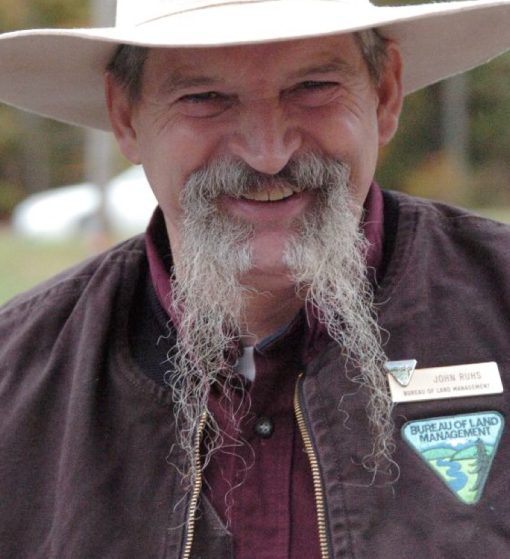
Nevada BLM Director John Ruhs
The deal was greased through by the “National Riparian Team,” composed of livestock industry sycophants from within BLM and the Forest Service, and outside cattle consultants.
The Team, while claiming to be a neutral party, immediately took the ranchers’ side – with Team members railing against perceived interference by the local BLM staff that had sought to control cattle damage to the public lands. So it’s no surprise the settlement flung open sensitive closed sage-grouse habitats to full bore grazing. Herds of several hundred cows were allowed to trample and devour “forage” across the drought-stricken public land in 2015.
The settlement put the Team in charge of a Coordinated Monitoring Group “(CMG”) dominated by ranchers and a token enviro group to take control of monitoring, to direct management actions, and run interference with the local BLM so the Argenta ranchers would not be accountable for grazing damage or trespass.
The cabal bars the public and press from observing their monitoring of grazing damage, and from their closed door discussions that dictate management. The group tells BLM what to do to keep the ranchers happy.
The result has been grazing chaos, and wanton damage of lands and waters. Wildlands Defense (WLD) and colleagues visited Argenta to observe and document conditions. Cattle were scattered all over the allotment, and riparian areas ravaged. When we asked BLM where cows were supposed to be present, the local BLM managers did not even know. All was in the hands of the Team and CMG.
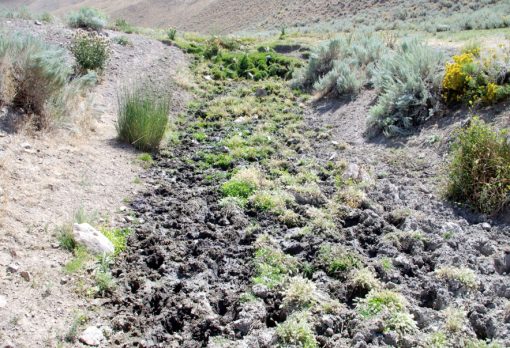
Cattle trampling dries out and destroys sage-grouse brood habitats.
Scads of new cattle projects are also laid out in the settlement. A July Team memo plans new barbed wire fencing and water projects incrementally sprawled across Argenta. The Team embraces injurious grazing practices – severe cattle trampling soil disturbance and high use of native grasses. Why the projects? So ranchers don’t have to work to control their cows. This frontloads Argenta with band-aid fences around prominent degraded areas (and long term monitoring sites) close to roads, prior to any thorough Land Health assessment. There never has been any grazing study since the 1976 passage of FLPMA. The ranchers can then claim conditions within the little fenced areas are “improving,” and insulate against cattle cuts in an assessment.
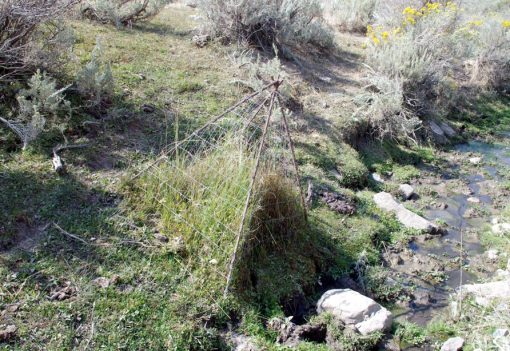
Monitoring cage illustrating how severe cattle use is. Our site visits found such cages destroyed in some areas since the CMG group took over.
This fall, BLM obediently issued a Decision giving the ranchers six new permanent fences, plus “temporary” water troughs and a pipeline. WLD and Wild Horse Education appealed the first battery of projects, which are terrible for wildlife. Sage-grouse and other wildlife are killed by flying into or becoming entangled with wire. The projects also shift intensive impacts onto other areas. We also challenged the Ruhs Settlement – which has altered grazing, established the exclusive closed meetings, and directed the projects. BLM claims we can’t appeal the Settlement.
Now over the holidays, BLM proposed more projects. The ranchers, through the cover of the Team and CMG, are essentially now running the public lands.
North Buffalo Settlement
Days after BLM caved in Argenta, one of the very same permittees, Filippini Ranch, rewarded BLM appeasement efforts by unleashing their cattle on the nearby North Buffalo allotment. North Buffalo, like Argenta, was closed for drought protection. It is home to a very small struggling population of sage-grouse, whose habitat is also being consumed by foreign gold mines.
BLM could not help but notice the cows turned out illegally, since the ranch owner told about the trespass to the Elko newspaper, flaunting his power. Leadership under Ruhs promptly rewarded this trespass with another Settlement deal. Just as in Argenta, a North Buffalo Settlement flung open the closed lands. BLM charged Filippini around $100 for willful trespass – a small price for being allowed access to tens of thousands of dollars worth of public lands “forage” for which the permittees pay a pittance.
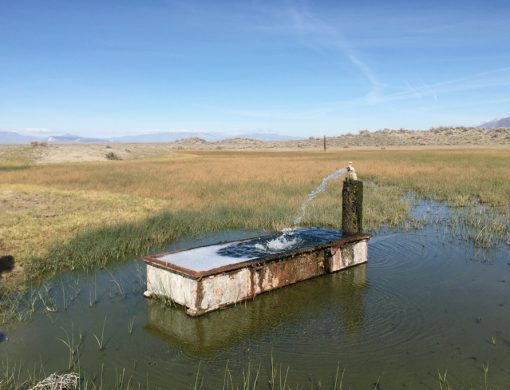
Uncapped abandoned test well site in now Wilderness lands where rancher claimed water rights.
DeLong and Humboldt County Settlement
There is yet another Settlement deal gift to a powerful rancher, this time in Winnemucca BLM lands. The powerful Delong ranching operation and Humboldt County had sued BLM over a raft of access issues primarily involving cattle water projects, many in Wilderness areas with no access roads. The projects had not been recognized by BLM when compiling project lists following the passage of the Black Rock Wilderness legislation in 2000. The lawsuit involved arcane regulations originating in the 1800s and early 1900s. BLM issued a scoping letter this fall proposing to maintain, reconstruct and access 15 cattle projects, access private inholdings, and maintain irrigation ditches – mainly in the North Jackson, South Jackson and Black Rock Wilderness in the South Jackson allotment.
BLM did not tell the public in its confusing letter that the proposal was based on yet another recent Settlement deal. We only learned of this when querying the BLM staff.
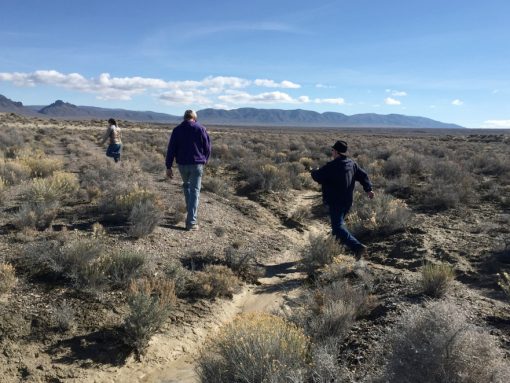
BLM field trip in area where rancher is being allowed access for cattle water project.
Hold Your Wild Horses
BLM leadership has knowingly looked away from a series of purposeful and blatant violations of the Code of Federal Regulations by a rancher (Borba) in the Fish Creek wild horse Herd Management Area in Battle Mountain country.
The rancher was found to be in “willful trespass,” grazing his livestock outside the boundaries of his legally authorized use for eight months. Under pressure from politicians Heller and Amodei, the BLM reduced the trespass and lowered fees.
The rancher and Eureka County also became upset over a local BLM decision to manage wild horses to incrementally reduce the population. The BLM removed over 200 wild horses, and then planned to use the PZP fertility control drug, and release horses given fertility control back to the HMA. In a stand-off reminiscent of an old western movie, the county and rancher showed up onsite and demanded the BLM not release the horses.
The BLM caved, and the horses were hauled away. After a lengthy legal battle the horses were returned to the range months later.
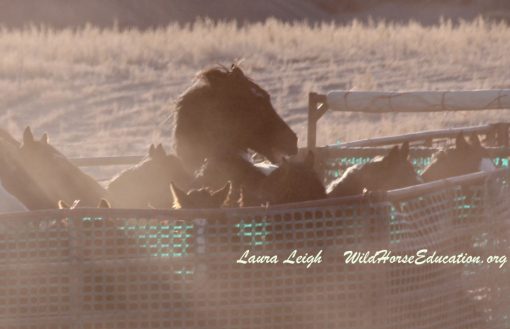
The disgruntled rancher began a social media campaign to rile the public against “government abuse.” Claims were made that he was never in trespass. He videotaped himself repeatedly breaking the law, and put it on social media. The penalties for the acts committed clearly state that the permittee will face fines, possible jail time and “shall” lose the right to graze on public lands.
Ruhs met with the rancher, County and local BLM Manager Furtado at Fish Creek, and sided with cattleman over his own staff. The BLM state office has now put the brakes on the fertility control program for the Fish Creek wild horses. This winter, the permittee is grazing livestock as if nothing happened.
Is It Continued Bungling, Political Interference or Tacit Support?
Badly bungling the Bundy situation and failing to act for almost two years now, the BLM opened the floodgates of rancher defiance and Sagebrush Rebel hell. The Ruhs Settlement deals reward powerful public lands ranchers who hate the agency and the very concept of public good and public lands. Allowing violations of federal law to go unaddressed has created an environment where any concept of law appears meaningless. The Settlements in Argenta, North Buffalo, Jackson Mountain/DeLong, coupled with BLM leadership ignoring blatant Fish Creek rancher law-breaking, embolden the very parties who want to see the public lands become unmanageable by the federal government.
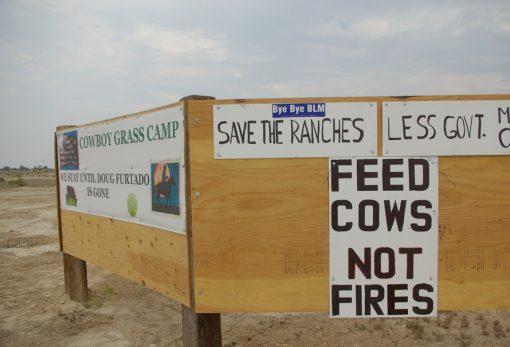
Safety of BLM employees on the ground has been jeopardized. The ranchers want removed anyone who might attempt to protect the environment. Their intimidation campaign is demanding Battle Mountain District Manager Doug Furtado be fired. The local office has been rendered powerless.
Appointment of Ruhs as Nevada Director, sweetheart settlement deals and toleration of overt law-breaking all have taken place under national BLM Director Neil Kornze, a native of Elko, Nevada and son of a mining engineer.
Is this ineptitude on the part of BLM leadership, political interference, or something else? Kornze increasingly appears to be either the most bungling BLM Director ever – or a fellow traveler with the Nevada public Land Grab crowd. While we continue to see PR photos of the BLM Director on outdoor excursions, important areas of the American West are being handed over to the welfare ranchers through a policy of capitulation and appeasement – resulting in a de facto loss of federal control and stealth Land Grab.
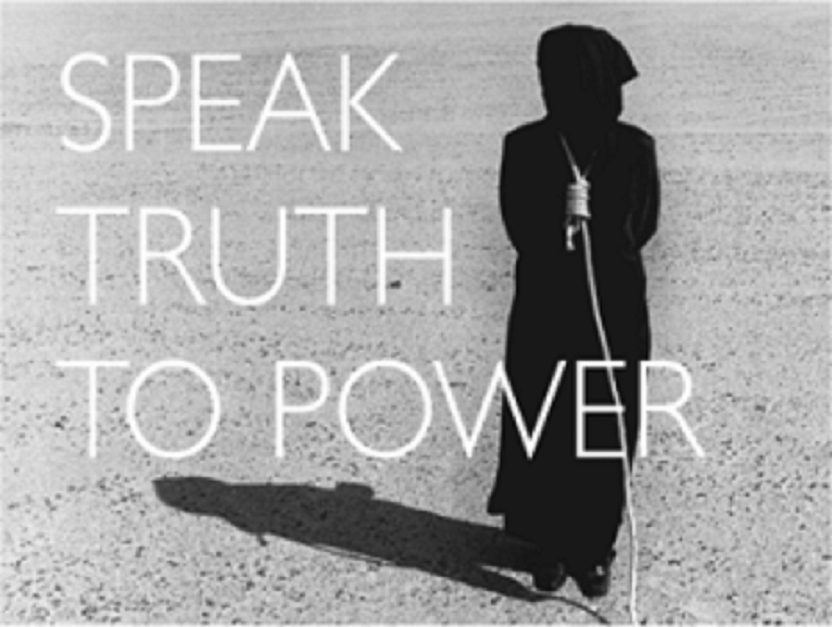
by Deep Green Resistance News Service | Jan 9, 2016 | Culture of Resistance, The Solution: Resistance
By Zoe Blunt / Deep Green Resistance
Featured Image via the Speak Truth the Power Project.
The more we challenge the status quo, the more those with power attack us. Fortunately, social change is not a popularity contest.
Activism is a path to healing from trauma. It’s taking back our power to protect ourselves and our future.
From a spoken-word presentation in Victoria BC, 2009
Thank you for the opportunity to launch my speaking career. Some of you may know me as a writer and an advocate for social and environmental justice. Others may know me as a cat-sitter, odd-jobber, and temp slave. (Laughter)
I knew when I started out as an activist that I would never be a millionaire and I was right. But I have a certain freedom and flexibility that your average millionaire might envy.
The market demand for social justice advocates is huge right now. It’s a growth industry. And the job security is fantastic – there is no shortage of urgent issues demanding our attention. Experience is not necessary, people come to activism at every age and stage in their lives. It’s that easy!
OK, it’s not actually that easy. (Laughter) But it is a fascinating time to be a “radical.”
There is a great tradition of courage and action here on Vancouver Island. There is potential for even greater future action, so we are doing everything we can to nurture that potential. Building community, linking up networks, teaching, learning, coming together, healing – this is all part of the movement.
For most of my adult life, I suffered from social phobia. I was afraid of authority, filled with self-doubt, paralyzed by anxiety. Getting interviewed live on national TV doesn’t make that go away. But hiding under the covers doesn’t cure it either. So my insecurities and I just have to get out there and do our best.
What compels me is the knowledge that we’re rewriting the script – the one that says, “You don’t make a difference. It is what it is, you can’t fight city hall, the big guys always win.” We can remember that we are not powerless. And when we choose to stand up, it is a huge adrenaline rush – bigger than national TV or swinging from a tree top. That’s the reward – that flood of excitement that comes from taking back our power and using it effectively, for the collective good.
It helps to get love letters from friends and strangers who want to thank me for standing up for what’s important, and who get inspired to take action themselves.
But it’s not all warm fuzzies and celebratory toasts. We face backlash and punishment and threats to our lives and safety.
I led a workshop for new activists this year, and I asked them, “Who are your heroes?”
They named a dozen. Gandhi. Martin Luther King. Tommy Douglas. Rosa Parks. These folks led amazing, heroic movements, but our discussion focused on the ferocious backlash they faced. British media reports on Gandhi when he was challenging the monarchy had the same tone as white Southerners responding to Rosa Parks refusing to give up her seat on the bus. It was vicious. “Uppity and no-good” were some of the polite terms. They were targeted with hate speech and death threats. We hear the same now about whistleblowers. And feminists and environmentalists. It can be terrifying.
The more we challenge the status quo, the more the entrenched powers attack us. The more effective we are, the more they attack us. As Gandhi said: “First the ignore you, then they ridicule you, then they fight you, then you win.”
The fight for justice and liberation won’t be won by popularity contests.
Every campaigner finds their own way of dealing with the counter-attacks. Some laugh it off. Some pray, some cry on their friends’ shoulders. Some go on the counter-offensive, some compose songs, some write long academic papers deconstructing their opponents’ logic. The important thing is, they deal with it, and they don’t give up.
We take care of each other as a community. Because we are all so fragile. Because there is so much trauma and despair everywhere and it affects everyone. But inside that despair, in all of us, there is a solid core of love for the earth and the knowledge that we can act in self-defense. That’s where we find strength.
It’s humbling to note that the economic downturn has done more to preserve habitat and stop climate change than all of our conservation efforts of the past years combined. We take responsibility for recycling and turning down the thermostat, but who is responsible for the scale of destruction from the Tar Sands? That project is the equivalent of burning all of Vancouver Island to the ground. It negates everything we could hope to do as individuals to fight climate change.
How do we deal with that horrible reality? I couldn’t, for the first year of the campaign. I didn’t want to look at the pictures and hear the news stories about the water and air pollution and the rates of illness among the Lubicon Cree people. The scale and the horror of it were too great.
I’ve worked on toxics campaigns and I dread them. Old-growth campaigns are inspiring, because where the action is, the forest is still standing – it’s beautiful and magical and we’re defending nature’s cathedral from the bulldozers and chainsaws. The good earth is here, and the evil destructive forces are over there. It’s clearcut, so to speak. But when a toxics campaign is underway, the damage has been done. The landscape is poisoned and people have cancer and spontaneous abortions, and the birds, the fish, the animals, are dead and dying. It is a scene of despair.
If it sounds traumatizing, it is. And we are all traumatized.
Look at this landscape – concrete, pavement, bricks and mortar, toxic chemicals, but underneath, the earth is still there. We have whole ecosystems slashed and burned without so much as a by-your-leave. We’ve lost whole communities of spruce, marmots, murrelets, arbutus, sea otters, and geoducks. These are terrible losses.
And we humans suffer on every level. Is there anyone here who doesn’t know someone who’s had cancer? Who hasn’t seen the damage caused by diseases of civilization? Who here hasn’t been forced to do without for lack of money? Are there any women here who have never been sexually harassed or raped or assaulted?
(Silence)
Something fundamental has been taken from us here. How do we deal with these losses?
I consider myself fortunate because after a lifetime of abuse from my family and male partners, I participated in six months of Trauma Recovery and Empowerment at the Battered Women’s Support Centre in Vancouver.
And I got to know the stages of trauma recovery:
Acknowledge the loss, understand the loss, grieve the loss.
And the stages of grief:
Denial, anger, bargaining, depression, and acceptance.
These steps are a natural and necessary response to the loss of a loved one, and also to the loss of our humanity and the places we love.
There are people living in national sacrifice zones, people who burn with determination to make change. They are angry, and they have a right to be. I am angry because I’m not dead inside, in spite of all they’ve done to me. Anger is part of the process of grief, and it’s useful. It grabs us by the heart when people are hurting the ones we love.
For me, part of the process is taking action – rejecting helplessness and taking back power. Stopping the bleeding and comforting the wounded.
I fall in love with places and I want to protect them. I fell in love with the Elaho Valley and some of the world’s biggest Douglas Firs in 1997. That forest campaign was a pitched battle, far from the urban centers, against one of the biggest logging companies on the coast at that time.
In the third year of the campaign, I walked into my favourite campsite shaded by majestic cedars. I saw the flagging tape and the clearcut boundaries laid out, and I realized it was all doomed. I could see the end result in my mind’s eye: stumps and slash piles as far as the eye could see, muddy wrecked creeks, a smoldering ruin.
I realized no one was going to come and save this place – not Greenpeace or the Sierra Club, no MP’s private member’s bill, or whatever petition or rally was being planned back in the city. It was as good as gone. All we had to do was stand aside and do nothing, and this incredible, irreplaceable forest would be just a sad memory.
But after that realization, and after the despair that followed, I had a profound sense of liberation. If it is all doomed, then anything we do to resist is positive, right? Anything that stops the logging, even for a minute, or slows it down, or costs the company money, or exposes it to public embarrassment and hurts its market share, is positive – it keeps the future alive for that one more minute, one more hour, one more day. It was a revelation.
Acceptance, for me, meant being able to act to defend the place I loved. It meant standing up to the bullies and refusing to let them take anything more from me.
In the third year of the Elaho campaign, it was just a handful of people rebuilding the blockades, defying the court orders and continuing the resistance. We didn’t quit when the police came, or when we were called “terrorists” and “enemies of BC.” We didn’t quit even after 100 loggers came and burned our camp to the ground and put three people in the hospital.
The attack was a horror show. People were in shock. But a crew was back with a new camp five days later. By then, the raid was national news. And our enemies had nothing left to throw at us. The loggers didn’t know what to do next. Short of killing us, what more could they do?
We had called their bluff.
We didn’t know about the negotiations going on behind the scenes. We didn’t realize that we had already cost the loggers more than they could hope to recoup by logging the entire rest of the valley. (They were operating on very slim profit margins.) We found out when the announcement came that the logging would stop. And it never started again. We won. Now the Elaho Valley is protected by the Squamish Nation — and by provincial legislation — as a Wild Spirit Place.
The violence of the mob showed the level of fear and desperation of the losing side. It was their weapon of last resort and it didn’t work. And they lost.
In the fourth year of the stand for SPAET – the campaign to stop the development and protect the caves, the garry oaks, and the wetlands on Skirt Mountain – we faced the same tactics. We were called “terrorists,” and in 2007, the developers sent 100 goons to rough up people at a small rally. And again, most of our comrades are still in shock. There’s only a handful of us still bashing away at the next phase of development.
We are winning. The other side has thrown everything they have at us and they have nothing left.
There are still sacred sites on SPAET. The cave is still there, buried under concrete.
Meanwhile, the developer’s little empire fell apart, either because of our boycott campaign, bad karma, or because it was operating on the slimmest of shady margins. We took the next phase of development to court. Our campaign, and the economic downturn, turned out to be enough to scare off investors and cancel the project, at least for now.
This work is difficult, painful, and traumatic. So the first step to courage is to acknowledge that pain and loss. We need to name what has been taken from us. Then we can cry, and rage, and grieve. We can name the ones who are doing the damage. We can reach down inside and find our core strength and our truth, and use it. That’s where courage comes from.
Martin Luther King said, “Justice shall roll down like waters, righteousness like a mighty stream.” But I’m impatient. I want to see that mighty stream now – what’s the hold-up? What’s holding us back, when there’s so much to do?
We’re not heroes, actually – none of us is smart enough, or tough enough, or connected enough, to take this on alone. We don’t have superpowers. We are only human, we struggle and suffer and sometimes, we win.
Some folks assume I have some vision, some over-arching game plan, some magic power that gives me an edge. Nope. Most of the time I am just flailing around on the political landscape, taking potshots when I see an opening. Sometimes it’s intuition, and it pays off. When we are right, it is amazing. When we win, it sets a precedent for the future.
In order for evil to prevail, all that’s required is for good people to do nothing. Don’t be one of those good people.
Activism is part of the healing. It’s taking action to protect ourselves and our future.
Thank you for the opportunity to tell these stories today.
(Applause)
Also read how Zoe Blunt moved from “flailing around on the political landscape” to strategic activism: Deep Green Resistance: Words as tactical weapons
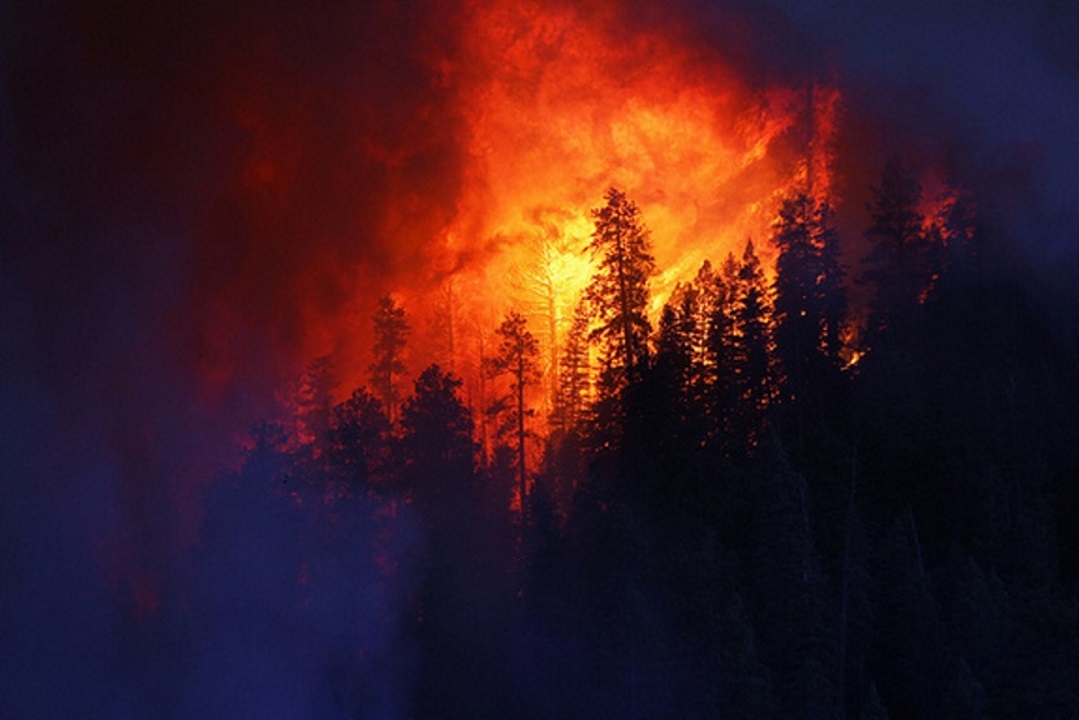
by DGR Editor | Jan 8, 2016 | Culture of Resistance
Derrick Jensen / Deep Green Resistance
I’ve always kind of hated that quote by Edward Abbey about being a half-hearted fanatic (“Be as I am — a reluctant enthusiast . . . a part-time crusader, a half-hearted fanatic”). Not so much because of the racism and misogyny that characterized some of his work. And not even because of the quote itself. But rather because of how that quote has been too often misused by people who put too much emphasis on the half-hearted, and not nearly enough emphasis on the fanatic.
The fundamental truth of our time is that this culture is killing the planet. We can quibble all we want — and quibble too many do — about whether it is killing the planet or merely causing one of the six or seven greatest mass extinctions in the past several billion years, but no reasonable person can argue that industrial civilization is not grievously injuring life on Earth.
Given that fact, you’d think most people would be doing everything they can to protect life on this planet — the only life, to our knowledge, in the universe. Sadly, you’d be wrong.
I think often of a line by the psychiatrist R. D. Laing, “Few books today are forgivable.” He wrote this, I believe, because we have become so very alienated from our own experience, from who we are, and this alienation is so destructive to others and to ourselves that if a book does not take this alienation as its starting point and work toward rectifying it, we’d all be better off looking at blank pieces of paper. Or better, actually experiencing something (or someone). Or even better, entering, as Martin Buber might have written, into a relationship with something or someone.
I agree with Laing that few books today are forgivable (and the same is true for films, paintings, songs, relationships, lives, and so on), and I agree for the reasons I believe he was giving. But there’s another reason I think few books (films, paintings, songs, relationships, lives, and so on) are forgivable. There’s that little nagging fact that this culture is murdering the planet. Any book (film, painting, song, relationship, life, and so on) that doesn’t begin with this basic understanding — that the culture is murdering the planet (in part because of this alienation; and of course this murder then in turn fuels further alienation) — and doesn’t work toward rectifying it is not forgivable, for an infinitude of reasons, one of which is that without a living planet there can be no books. There can be no paintings, songs, relationships, lives, and so on. There can be nothing.
The conservation biologist Reed Noss has called his field a “combat discipline”: we are in a crisis, and our attitudes and actions need to reflect this. And so I sometimes try to apply the Ed Abbey quote to the work of a firefighter. If you were trapped in a burning building, would you want the firefighters to be reluctant enthusiasts, part-time crusaders, half-hearted fanatics? Should the mother of a very sick child be reluctant or half-hearted in defense of that child?
If you were trapped in a burning building, would you want the firefighters to be reluctant enthusiasts, part-time crusaders, half-hearted fanatics?
I’m not saying we don’t need recreation. I’m not saying we don’t need amusement. Hell, I have three mystery novels in my backpack right now. I’m not saying a firefighter doesn’t need to rest — having hauled seven unconscious people out of the burning building, we could hardly blame the firefighter for grabbing a quick drink of water or sometimes taking a day off; and I’m not saying the mother doesn’t need to sleep or take some time away from the stress of caring and advocating for her child. We all need the occasional escape, or even indulgence. But we must be able to pursue those escapes and indulgences with the knowledge that others are rushing into the burning building, that others have taken over the job of advocating for whatever is necessary to heal that child.
And that, frankly, is part of the problem: there aren’t nearly enough of us working anywhere near hard enough to stop this culture from killing the planet. Obviously, or the world would be getting healthier, instead of being desecrated with ever increasing speed. If there were more of us trying to stop this culture from killing the planet, then those who are working themselves to death could afford to take a little time off and not feel as if things would fall apart while they climbed the mountains or ran the rivers.
“It is not enough to fight for the land,” Abbey continued; “it is even more important to enjoy it. While you can. While it is still there.” But this part of the quote might actually bother me more, in part because of its fatalism and in part because we — humans — are not the point. Yes, absolutely we should enjoy and commune with and make love with and touch and be with and absorb and be absorbed by the land. Yes, absolutely we should sit in the sun and feel it warm our bones, and we should listen to the whispering voices of trees, and we should open our ears and our hearts to the voices of frogs. But when the forests are being flattened and the frogs are being extirpated, enjoying them isn’t enough. So long as there’s still something we can do to protect them, shouldn’t protecting them be far more important than enjoying them? Because, once again, we are not the point. The trees, the frogs, do not exist for us. It is our culture that is killing them, and it is up to us to stop it.
Have you ever had anyone you love die or come to grievous harm needlessly, from some unnecessary act of stupidity or violence? I have. And in the aftermath I have never wished I had spent more time enjoying this other, but rather wishing I had acted differently such that I was able to prevent the unnecessary losses.
As my artist and writer friend Stephanie McMillan wrote in her essay “Artists: Raise Your Weapons”: “If we lived in a time of peace and harmony, then creating escapist, serotonin-boosting hits of mild amusement wouldn’t be a crime. If all was well, such art might enhance our happy existence. There’s nothing wrong with pleasure or decorative art. But in times like these, for an artist not to devote her/his talents and energies to creating cultural weapons of resistance is a betrayal of the worst magnitude, a gesture of contempt against life itself. It is unforgivable.”
I would extend her comments beyond art: in times like these, for anyone not to devote her/his talents and energies to defending the planet is a betrayal of the worst magnitude, a gesture of contempt against life itself. It is unforgivable.
The questions I keep coming back to are these: in this time, as countless multitudes of humans and nonhumans suffer for the profits and luxuries of a few, and as species go extinct at rates greater than any in the last scores of millions of years — as large-vertebrate evolution itself is being halted — what does the world need? What does the world need from me?
I want to be very clear: I don’t mean to imply that we shouldn’t love the world or each other (human or nonhuman). Or that we shouldn’t play games or have fun. I’m not saying we shouldn’t rest or go hiking or read good books (and Desert Solitaire is a great book). I’m not even saying I have a problem with Abbey’s quote as such; my main problem with the quote is the many would-be activists who use it as an excuse for inaction.
We are in a crisis, and we need to act as such. We need to rescue people from the burning building. We need everybody’s help.
Original published in the July/August 2010 issue of Orion
Photo Credit: US Forest Service, Apache-Sitgreaves National Forest
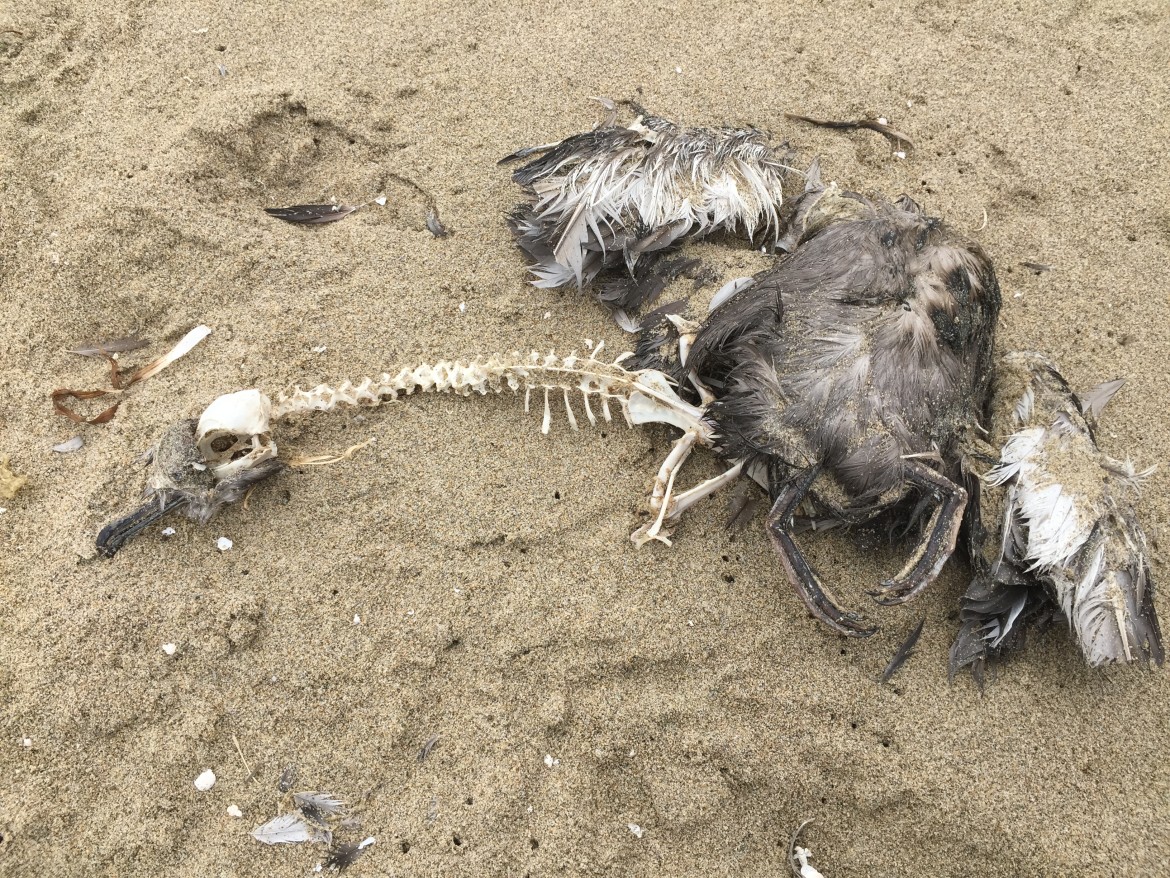
by Deep Green Resistance News Service | Jan 6, 2016 | Biodiversity & Habitat Destruction
By Raven Gray / Deep Green Resistance
Dec 21st, 2014. I walk to Kehoe beach with my son. A winter storm is raging from the northwest, blurring the boundary of sky and sea. We have the place to ourselves. The tide is out, but the wind carries the waves up to the high tide line. Trash is everywhere; candy wrappings, drinking straws, polystyrene balls, plastic bottle tops, bullet cases. We start to pick it up, when I realize that there are hundreds of dead birds buried in the sand, tangled up in the piles of kelp. Once I see them, I cannot look away, their bodies scattered as far as the eye can see. I start counting, but stop after a while. All of them are Cassin’s Auklets.
April 24th, 2015. I drive to Limantour Estero on a bird watching trip, with five local birders. My heart bursts to see the burnt and broken landscape, and I call out: “Look! Look how the Bishop Pines are dying! So many have died in the past year!” The conversation falls silent. The guide clears his throat, looks back at me and says he hadn’t really noticed, it all looks fine to him. He says he’s more interested in the birds. The woman next to me turns and says: “Maybe it’s their time to go. Everything dies, you know.”
August 24th, 2015. I return to Kehoe Beach with my son. A strong northwesterly carries the stench of death into the dunes, attacking our nostrils long before we reach the sea. It’s unwelcoming but I want to be a witness, so we walk on. The tide is low, and as we reach the high tide line, I can see that once again, countless dead birds are buried in the sand. The wrack zone is composed entirely of white feathers stretching in both directions, as far as the eye can see. I start counting, but stop after a while. All of them are Common Murres.
September 6th, 2015. I take my son to Drake’s Beach Sand Sculpture Contest. It’s hot, in the 90s, and there are over three thousand people there. I notice a large plastic bucket in the crowd. Some people walk past and look into it, then move on. Curious, I walk over. Inside, a cormorant is lying prostrate, flapping one wing. It is being baked alive. I pick her up and wrap her in my shirt. I whisper: “It’s OK. I’ve got you now.”
I look around for a park ranger to help. The first one shrugs: “Maybe it’s their time to go. Everything dies, you know.” The second one says: “It’s illegal to touch that bird.” “Go ahead,” I say. “Arrest me.” The third one says: “Yes, the sea birds are dying. It’s part of a natural die-off. I’m sorry, but the Park’s policy is to let nature take it’s course”. I tell her that there is nothing ‘natural’ about human induced climate disruption. I tell her that acidification of the oceans, warming seas, toxic algal blooms, Fukushima radiation, plastic pollution, and collapsing marine ecosystems are all man-made disasters. I tell her that the bird in my arms is intelligent, sentient, and that she deserves to live. That she has rights too, and it is our responsibility to protect those rights. At this moment, the bird raises her head and a bright ray of light shines out through her one aquamarine eye. She looks straight at me and promptly dies in my arms. I take her to a quiet place with my son, and we sing the ancestor song. We pray our tears will guide her home. On the way back we witness another cormorant curled up on the beach. We watch in silence as she dies too.
September 29th, 2015. It’s my birthday, and I walk to Limantour beach. On the way, I notice how many more Bishop Pines have died in the past few months. The landscape is beginning to look like Mars. When I get close to the beach, I’m overcome – again – with the stench of death. I look for dead birds and find them. Feathers and bones scattered in the shifting sands. I don’t bother to count them. The ocean water is pea-green tobacco soup. It smells acrid, like sulphur. I realize this must be the “blob” – the largest toxic algal bloom ever recorded, stretching 40 miles wide, 650 feet deep, running all the way from central California up to Alaska. I wonder how many lives it has taken, how many more it will take, and whether it will be here next year, and the year after, and the year after that, until eventually the whole ocean becomes one giant toxic blob bloom, devoid of all life?
The mass die-offs happening in the Pacific Ocean are not confined to birds. Sea lions, seals, dolphins, whales, anchovies, crabs, sea otters – all are dying in unprecedented numbers. They are starving to death. They are being poisoned. They are being killed. We are in the midst of the Sixth Great Extinction, and we are the cause.
Who will stand and bear witness? Who will count the dead? Do you have the courage to turn your face towards the pain, towards the dark truth of what we are doing to this earth? Or will you turn your face away as the world burns and dies around you?













